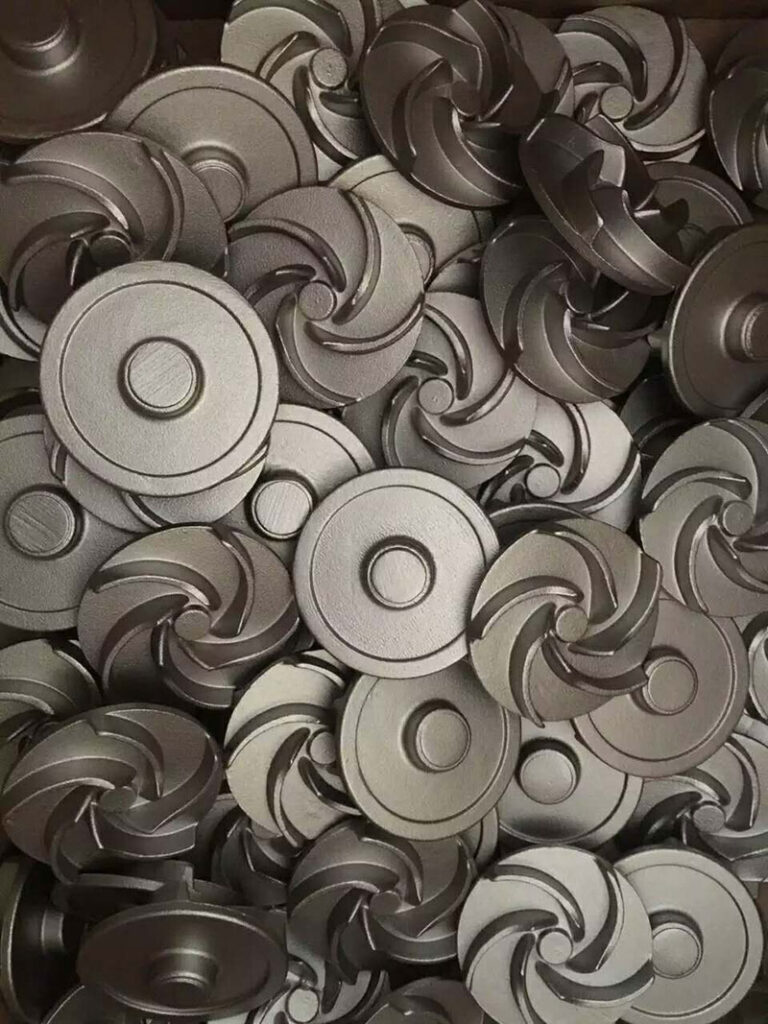Introduction
The convergence of additive manufacturing and traditional investment casting is unlocking unprecedented capabilities in producing components with complex internal geometries. By implementing industrial-grade 3D wax printing technology, we’ve achieved 50% reduction in development time for components with intricate internal channels, while improving dimensional accuracy by ±0.05mm. This transformation is enabling manufacturers to respond faster to market demands while maintaining the superior material properties of investment casting.
1. The Challenge of Conventional Wax Patterns
Traditional Limitations:
- Tooling Lead Time: 4-6 weeks for complex mold fabrication
- Geometric Constraints: Limited to CNC-machinable geometries
- Modification Costs: $5,000-$15,000 for mold changes
- Assembly Requirements: Multiple pieces requiring joining
Particular Challenges for Internal Features:
- Cores: Additional tooling and positioning requirements
- Venting: Difficulty in ensuring proper gas escape
- Inspection: Limited verification capabilities before casting
Industry Impact:
| Industry | Typical Lead Time (Traditional) | Main Complexity |
|---|---|---|
| Aerospace | 12-16 weeks | Cooling channels |
| Medical | 8-12 weeks | Lattice structures |
| Automotive | 6-10 weeks | Fluid passages |
2. 3D Wax Printing Technology Overview
2.1 Printing Process Characteristics
Technology: Material Jetting (PolyJet equivalent for wax)
Layer Resolution: 16-32 microns
Accuracy: ±0.1% or ±0.05mm (whichever is greater)
Build Volume: Up to 500 × 500 × 500 mm
Material Properties:
- Melting Point: 65-85°C (compatible with standard shell systems)
- Ash Content: <0.01% (reduced ceramic shell contamination)
- Surface Finish: Ra 0.8-1.6μm (as-printed)
2.2 Comparison: Traditional vs 3D Printed Patterns
| Parameter | Traditional CNC | 3D Printing | Improvement |
|---|---|---|---|
| Lead Time | 4-6 weeks | 2-3 days | 85% faster |
| Complexity | Limited | Virtually unlimited | Revolutionary |
| Cost (Prototype) | $8,000-$20,000 | $1,500-$4,000 | 70% reduction |
| Modifications | New tooling | Digital change | Instant |
3. Implementation Strategy
3.1 Digital Workflow Integration
Step 1: Design Optimization
- Topology optimization for weight reduction
- Lattice structure integration
- conformal cooling channel design
Step 2: Process Preparation
- Support structure generation
- Build orientation optimization
- Print parameter customization
Step 3: Post-Processing
- Support removal (water-soluble)
- Surface smoothing (thermal)
- Dimensional verification
3.2 Equipment Configuration
Primary Equipment:
- 3D Printer: Voxeljet VX1000 wax printer
- Software: proprietary build preparation suite
- Supporting Equipment:
- Post-processing stations
- Measurement systems
- Shell building equipment
Facility Requirements:
- Temperature control: 22±2°C
- Humidity control: 45±5% RH
- Cleanroom environment: ISO 7 standard
4. Technical Breakthroughs
4.1 Complex Internal Channel Manufacturing
Achieved Capabilities:
- Channel Diameter: Down to 1.2mm
- Aspect Ratio: Up to 40:1
- Surface Quality: Ra 1.6μm without polishing
- Integration: Multiple materials in single print
Case Example – Heat Exchanger:
- Traditional: 12 pieces assembled → 5 potential leak paths
- 3D Printed: Single piece → Zero assembly joints
- Performance: 30% improvement in thermal efficiency
4.2 Quality Validation Protocol
In-process Monitoring:
- Layer-by-layer optical inspection
- Real-time dimensional verification
- Material property testing
Post-process Validation:
- CT scanning for internal feature verification
- Flow testing for channel functionality
- Destructive testing for material properties
Quality Metrics Achieved:
| Parameter | Result | Standard |
|---|---|---|
| Dimensional Accuracy | ±0.05mm | ISO 286-2 |
| Surface Roughness | Ra 1.2μm | ISO 1302 |
| Feature Resolution | 0.3mm | – |
| Repeatability | 99.2% | Statistical process control |
5. Case Study: Aerospace Fuel Nozzle
Project Requirements:
- Part: Turbine fuel nozzle with 37 internal channels
- Material: Inconel 718
- Lead Time: <8 weeks
- Quality: AS9100 compliance required
Traditional Approach:
- Pattern Making: 5 weeks (multiple core boxes)
- Casting Development: 3 iterations
- Total Time: 14 weeks
- Cost: $42,000
3D Printing Solution:
- Digital Design: 5 days (including simulation)
- Pattern Printing: 3 days (single piece)
- Casting First Article: Success on first attempt
- Total Time: 6 weeks
- Cost: $18,000
Results:
- Time Saving: 57% reduction
- Cost Saving: 58% reduction
- Performance: 22% improvement in flow characteristics
- Quality: Zero defect first article
6. Economic Impact Analysis
Cost Comparison:
| Expense Category | Traditional | 3D Printing | Saving |
|---|---|---|---|
| Tooling | $15,000 | $0 | 100% |
| Labor | $8,000 | $3,500 | 56% |
| Material | $4,000 | $2,800 | 30% |
| Iterations | $15,000 | $2,500 | 83% |
| Total | $42,000 | $8,800 | 79% |
Additional Benefits:
- Inventory Reduction: Digital storage of patterns
- Risk Mitigation: Verify before physical production
- Customization: Economical small batch production
- Sustainability: 65% less material waste
7. Implementation Roadmap
Phase 1: Technology Assessment (2-3 weeks)
- Identify suitable components
- Evaluate technical feasibility
- Calculate ROI potential
Phase 2: Pilot Program (4-6 weeks)
- Select 2-3 test components
- Establish baseline metrics
- Train technical team
Phase 3: Full Implementation (8-12 weeks)
- Ramp up production capacity
- Integrate with existing workflow
- Implement quality systems
Phase 4: Optimization (Ongoing)
- Continuous process improvement
- New material development
- Application expansion


